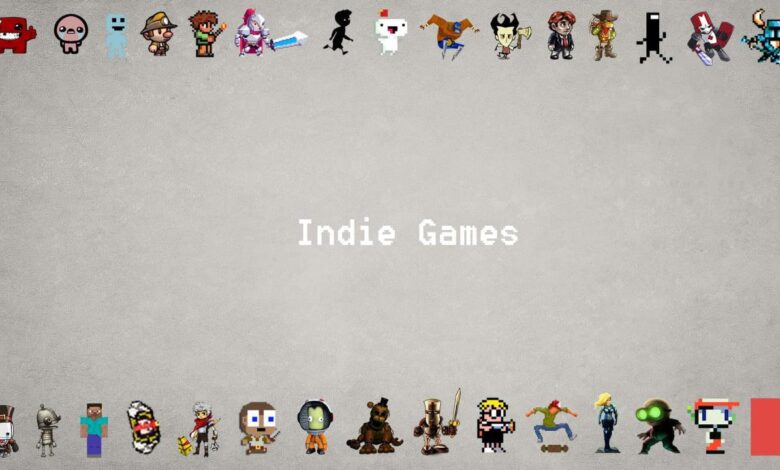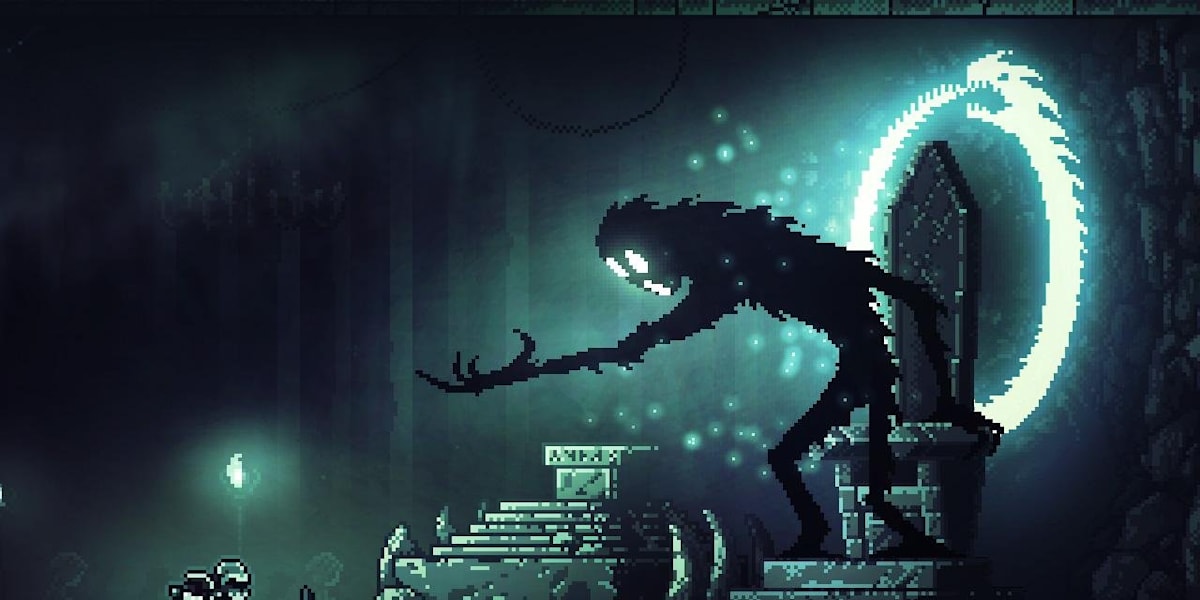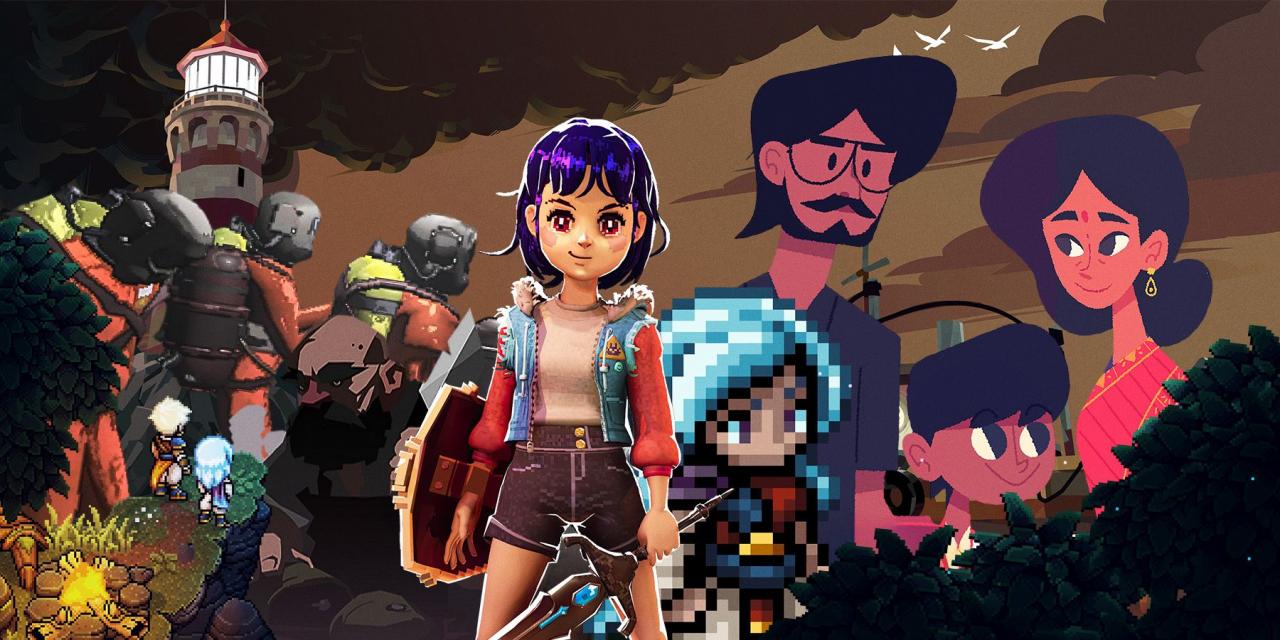Exploring the Heart and Soul of Independent Gaming

When we talk about video games, our minds often jump to the multi-million dollar spectacles—the massive, cinematic adventures backed by huge marketing campaigns and hundreds of staff members. These are the games that dominate headlines and push the boundaries of graphical fidelity.
However, hiding just beneath this glossy surface, or sometimes exploding right through it, is a dynamic, creative, and utterly essential movement known as independent gaming. This realm, often simply called the “indie scene,” represents the core spirit of the medium: pure, unfiltered artistic vision.
Defining the Independent Spirit

What exactly sets an independent game apart from a blockbuster title, commonly known as a triple-A (AAA) game? The difference isn’t purely technical or graphical; it’s fundamental, rooted in creative control and financial structure. An indie game is, at its heart, a project where the developers, often a small team or even a single person, maintain full ownership and final say over the game’s direction, scope, and ultimate vision. This freedom is the invisible ingredient that allows for truly unique experiences to flourish.
The Foundation of Independence
The term “indie” is more a philosophy than a rigid legal definition. It implies a liberation from the corporate demands and market research that often govern AAA development. This independence can be broken down into three critical pillars:
A. Funding Autonomy
The financial model of an indie game is the first major point of divergence. Instead of securing nine-figure budgets from a major publisher (like Electronic Arts or Sony), indie developers piece together their funding through innovative and often scrappy means.
- A. Self-Funding (Bootstrapping): Many developers start by funding the project themselves, working on the game in their spare time while holding down a main job. This is the ultimate form of creative control, as there are zero external financial pressures.
- B. Crowdfunding Platforms: Sites like Kickstarter and Indiegogo have become vital arteries for indie developers. They allow the creator to connect directly with the audience, not only securing funds but also building a dedicated community of early adopters who feel invested in the game’s success.
- C. Publisher Partnerships (Carefully Selected): While “indie” often means “no publisher,” many successful small studios partner with boutique or specialized indie publishers (like Devolver Digital or Annapurna Interactive). Crucially, in these arrangements, the developer retains the creative IP and decision-making power, using the publisher primarily for marketing and distribution muscle.
- D. Government Grants and Competitions: Some developers secure funding through arts grants or specialized competitions aimed at promoting creativity and digital culture.
B. The Power of Small Teams
The scale of development dramatically influences the final product. Where a AAA game might involve five hundred developers across multiple continents, an indie game might be made by five people in a single apartment, or sometimes just one.
- A. Agility and Iteration: Small teams can pivot quickly. If a mechanic isn’t fun, they can scrap it and replace it within days, not months. This agility allows for rapid prototyping and constant refinement of the core gameplay loop.
- B. Singular Vision: When a project is managed by a small core group, the creative vision remains coherent and focused. There are fewer compromises and committees involved, ensuring the final product feels unified and personal.
- C. Multidisciplinary Talent: Indie developers are often generalists. They might code the game, compose the music, design the levels, and handle social media simultaneously. This cross-pollination of skills often leads to unexpected and unique design decisions.
C. Unfettered Creative Freedom
This is arguably the most valuable commodity in the indie world. Without the pressure of satisfying a board of directors, hitting specific sales targets for stockholders, or adhering to proven market formulas, indie developers are free to experiment.
- A. Risk-Taking Narratives: Indie games are where you find stories about complex moral dilemmas, deep personal trauma, or abstract philosophical concepts, subjects that AAA studios might avoid due to perceived commercial risk.
- B. Experimental Mechanics: The rules of gameplay can be completely rewritten. Imagine games where the controls purposefully degrade (Getting Over It), where the player is constantly lied to (The Stanley Parable), or where the very interface is the puzzle (Baba Is You). This high level of experimentation fuels innovation across the entire industry.
- C. Unique Aesthetic Choices: While AAA aims for photo-realism, indie games embrace unique visual styles, often due to necessity but also due to artistic choice. This includes hand-drawn aesthetics, retro pixel art, striking minimalist designs, or even utilizing real-world photography and collage.
The Digital Revolution and the Indie Ascent

The current flourishing state of independent gaming is not an accident; it is the direct result of a massive shift in how games are sold and distributed, a shift that began in the mid-2000s and accelerated exponentially.
Key Milestones in the Indie Renaissance
For decades, getting a game published required a physical release—printing discs, designing boxes, securing shelf space—a prohibitively expensive process controlled entirely by major publishers. The arrival of high-speed internet and digital marketplaces completely dismantled this barrier.
A. The Initial Breakout on Console Platforms
Before Steam dominated the PC space, consoles quietly paved the way for indie acceptance.
- A. Xbox Live Arcade (XBLA): Microsoft’s platform in the mid-2000s became a crucial testing ground. It introduced classic titles like Braid and Castle Crashers to a wider console audience, proving that small, downloadable games could be commercially viable hits.
- B. PlayStation Network (PSN): Sony quickly followed suit, making platforms like the PS3 and later the PS4 accessible hubs for unique indie titles, often showcasing them heavily as a contrast to their major exclusive releases.
B. Steam and the PC Ecosystem
Valve’s Steam platform, which began as a simple launcher, grew into the single most important digital storefront for PC gaming, revolutionizing the field.
- A. Streamlined Distribution: Developers no longer needed physical manufacturing or a distributor. They could upload their finished product directly to a massive global audience with minimal overhead.
- B. Community and Discovery: Features like user reviews, tags, and early access programs allowed smaller games to be discovered organically by niche audiences, rather than relying solely on expensive advertising.
- C. The Explosion of Tools: Concurrently, the rise of accessible game engines like Unity and Unreal Engine, many of which offered free access or generous revenue-sharing models, meant that the technical barrier to entry for development dropped dramatically. A high school student with a laptop could now access the same powerful tools used by professional studios.
C. The Golden Age of Indie Blockbusters
The 2010s saw independent titles not just succeed, but occasionally outsell and overshadow their AAA counterparts, forever changing market perception.
- A. Minecraft’s Impact: Arguably the most important indie game ever, Minecraft (originally developed by one person) proved that a simple, highly iterative, and deeply creative concept could become a cultural phenomenon, redefining the limits of what a game could be.
- B. The Emergence of Narrative Powerhouses: Games like Undertale, Limbo, and The Witness demonstrated that players valued emotional depth, clever design, and compelling narratives far above realistic graphics. They set a new standard for storytelling in the medium.
- C. Sustained Success: The success of Stardew Valley (developed largely by one person, Eric Barone) cemented the idea that an indie developer could create a beloved, massive, and continuously updated experience that competed directly with established franchises.
The Diverse Canvas of Indie Innovation
The indie scene is a constant laboratory for new ideas, often responsible for incubating entire genres before they are adopted by larger studios. Their willingness to take risks means the most interesting innovations frequently originate here.
The Categorization of Indie Creativity
While indie games are often defined by their refusal to fit neatly into boxes, their contributions to the gaming landscape generally fall into several key categories:
A. Narrative-Driven and Emotional Journeys
These games prioritize story, character development, atmosphere, and emotional resonance over complex combat or competitive multiplayer. They treat games as a form of literature or film.
- A. Walking Simulators: Games like Gone Home and Firewatch strip away traditional gameplay elements, focusing entirely on exploration and uncovering a narrative through environmental clues and dialogue.
- B. Interactive Fiction and Visual Novels: These titles push the boundaries of storytelling, often exploring deeply personal or niche topics that require extensive reading and difficult player choices.
- C. Philosophical Puzzlers: Titles that use the gameplay mechanic itself to comment on human nature or technology, where the puzzle is often more about understanding the game’s intent than just solving a logic problem.
B. Procedural Generation and Endless Replayability
Indie developers, facing resource limitations, brilliantly utilized algorithms to create vast, unique worlds that offer near-infinite replayability with limited art assets. This led to the explosion of the Roguelike and Rogueluelite genres.
- A. The Roguelike Revival: Heavily influenced by the 1980 Rogue, modern hits like Hades and Slay the Spirefeature permadeath (permanent consequences for failure) and randomly generated levels, demanding mastery over memorization.
- B. Sandbox Survival: Games like Don’t Starve or RimWorld rely on complex interwoven systems and procedural maps to create emergent narratives where every playthrough tells a unique story of survival.
- C. The Power of The Loop: Indie titles have perfected the short, satisfying gameplay loop, offering constant rewards and variation that keeps players engaged for hundreds of hours, often for a fraction of a AAA game’s price.
C. The Pixel Art Revival and Unique Aesthetics
Indie games are responsible for validating the artistic merits of non-realistic aesthetics, proving that graphics do not need to be cutting-edge to be beautiful or impactful.
- A. The 8-bit/16-bit Nostalgia: Games like Shovel Knight expertly capture the look and feel of classic console eras while offering modern quality-of-life improvements, appealing to both veteran and new players.
- B. Hand-Drawn and Painted Styles: Titles such as Cuphead (using 1930s rubber hose animation) or Gris (using watercolor aesthetics) showcase the vast range of visual styles possible when a team is focused purely on artistic integrity.
- C. Abstract and Minimalist Design: Games like Limbo or Inside use extreme minimalism, relying on color palettes and silhouettes to create atmospheric tension and convey complex emotions with stunning efficiency.
The Challenges and Future of Independent Development
Despite the glamorous success stories, the life of an indie developer is often marked by tremendous risk, long hours, and high stakes. Understanding these challenges is key to appreciating the dedication required to bring these unique visions to life.
The Double-Edged Sword of Freedom
A. Financial Precarity and Burnout
The freedom from corporate oversight often translates to financial instability. Many developers self-fund projects for years with no guarantee of return, leading to the risk of financial ruin if the game fails to connect with an audience.
- A. The Scourge of Scope Creep: The endless desire to perfect the game, a common trait among passionate indie developers, often leads to the project expanding beyond its original scope, draining resources and pushing release dates back indefinitely.
- B. Mental Health Crisis: The intense pressure of self-employment combined with the solitary nature of development often results in burnout and significant mental health strains, a topic that is becoming increasingly discussed within the community.
B. The Visibility Hurdle: The “Indie Pocalypse”
The very ease of digital distribution that launched the indie movement has also created its biggest problem: saturation. Thousands of games are released every year on platforms like Steam, making it incredibly difficult for a small, unique title to stand out without a massive marketing budget.
- A. The Algorithmic Wall: Discovery is increasingly controlled by platform algorithms, often favoring games that already have traction, creating a self-fulfilling prophecy of success for the already successful.
- B. The Need for Marketing Savvy: Today, an indie developer must be an excellent programmer, artist, and game designer, but also a savvy social media marketer, press agent, and community manager—a monumental task for a small team.
- C. Relying on Community: Success often hinges on securing features from influential streamers and content creators, who act as the new gatekeepers, capable of launching a small game into orbit overnight.
The Unwritten Future of Indie Games
Looking ahead, the independent scene remains the single most important engine for innovation in the industry. The future points towards an even further democratization of game creation.
- A. AI-Assisted Development: The rise of generative AI tools is rapidly reducing the time and skill needed for routine tasks like asset generation, basic coding, and voice acting. This will further lower the barrier to entry, allowing even smaller teams to create technically impressive games.
- B. Modular Game Engines: Platforms like Roblox and Core are enabling developers to create and monetize experiences within an existing framework, bypassing the need for extensive coding knowledge and focusing purely on design and community.
- C. Player-Driven Narratives: Expect more indie games that allow players to profoundly shape the game world and story through their actions, reflecting the increasing desire for personalized and meaningful digital experiences.
Conclusion
The story of the independent game is the story of passion triumphing over profit, of unique art surviving market pressures, and of small teams challenging giants.
They are the essential counterweight to the often-formulaic nature of high-budget corporate releases.
The greatest value of the indie movement is not just the incredible games it produces, but the profound influence it wields over the entire industry.
When an indie developer proves that a niche concept—say, a deck-building roguelike, or a horror game centered on social media—can be a massive hit, the major AAA studios take notice.
These successful experiments are then scaled up and integrated, continuously pushing the boundaries of what is acceptable and possible in mainstream gaming.
Indie games are the R&D department of the entire video game world, conducting daring, low-cost experiments that often revolutionize the market.
Without the independent developer risking their time, money, and sanity on these unconventional ideas, the entire industry would stagnate, relying solely on sequels and proven formulas.
Moreover, the relationship between the indie developer and the player is often deeply personal.
When you purchase an indie title, you are not merely funding a conglomerate; you are directly supporting a small group of artists who poured years of their lives into a singular vision.
This direct connection fosters a healthier, more engaged community. It is a relationship built on trust, where players reward sincerity and unique ideas with their loyalty.
As consumers, our role is crucial in sustaining this ecosystem. By actively seeking out unique indie titles, leaving positive reviews on their storefronts, and supporting creators on platforms like Patreon or Kickstarter, we are casting a vote for creativity and originality.
We are ensuring that the digital shelf space remains open for the next surprise hit, the next artistic masterpiece, and the next game that makes us rethink the possibilities of interactive entertainment.
The independent game is more than just a category; it’s a necessary cultural movement that guarantees the future of gaming will remain diverse, vibrant, and always, truly surprising.
The heart and soul of gaming beats strongest in the small, passionate studios, and it is a rhythm we must all work to keep alive.